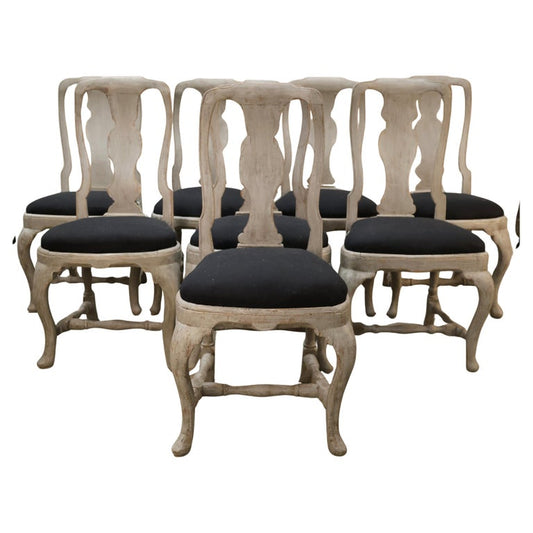Epochs

Baroque Furniture
Baroque furniture emerged in 17th-century Europe as a celebration of power, grandeur, and divine order. Characterized by richly carved wood, bold symmetry, and ornate gilded details, Baroque antiques remain highly sought-after for their dramatic presence. Think grand armoires, imposing credenzas, and throne-like chairs adorned with acanthus leaves, cherubs, and scrollwork - ideal for interiors that demand theatrical impact and historical prestige.

Rococo Furniture
Flourishing in 18th-century France, Rococo furniture softened the Baroque’s rigid formality into something more intimate and romantic. Delicate curves, asymmetrical motifs, and pastel-painted finishes define this style. Rococo chairs, Rococo tables and Rococo commodes exude playful charm while maintaining a sense of refinement. Perfect for elegant interiors that blend antique luxury with graceful femininity.

Gustavian Furniture
The Swedish Gustavian style—named after King Gustav III—reflects the cool restraint of neoclassicism, softened by Nordic light and Scandinavian minimalism. Painted in soft greys, whites, and pale blues, Gustavian antiques include clean-lined sideboards, fluted-leg tables, and serene seating with understated carvings. These timeless pieces pair beautifully with modern and classical interiors alike, offering serenity without sacrificing sophistication.

Empire Furniture
Originating in Napoleonic France, Empire furniture embodies imperial ambition. Its aesthetic blends ancient Roman symbolism with bold, geometric precision—mahogany veneers, gilt bronze mounts, and motifs like laurel wreaths, eagles, and sphinxes are hallmarks of the style. Empire chairs and Empier candlesticks bring a structured elegance to stately homes, galleries, and curated modern spaces.




